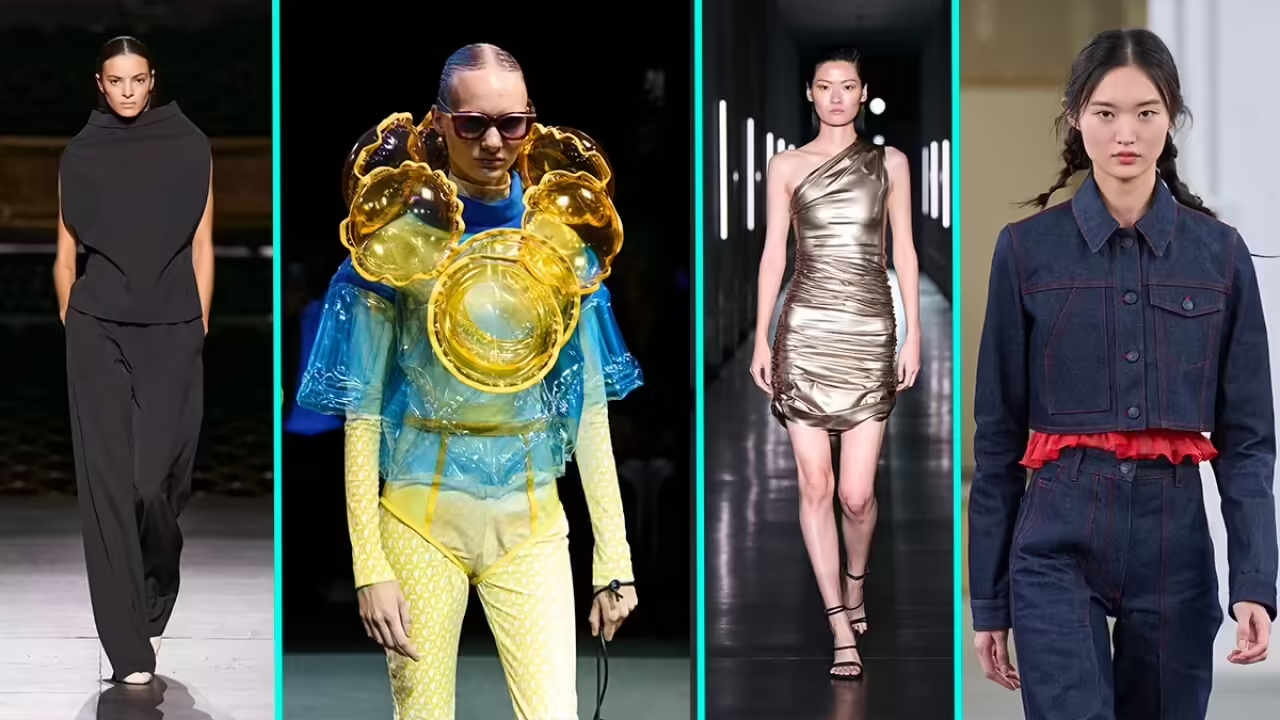
In recent years, the fashion industry has undergone a transformative shift towards sustainability, as consumers and industry leaders recognize the urgent need for more environmentally conscious practices. This paradigm shift has given rise to the concept of sustainable fashion, a movement that aims to redefine the way we produce, consume, and perceive clothing.
Defining Sustainable Fashion:
Sustainable fashion, also known as eco-friendly or ethical fashion, is an approach to clothing design, manufacturing, and consumption that prioritizes environmental, social, and ethical considerations. At its core, sustainable fashion seeks to minimize the negative impact of the fashion industry on the planet and its inhabitants, embracing practices that are environmentally friendly, socially responsible, and economically viable in the long term.
This multifaceted concept encompasses various aspects, including the use of eco-friendly materials, ethical labor practices, reduced carbon footprint, and waste minimization. Designers and brands committed to sustainable fashion strive to create a positive impact on the environment and society while delivering stylish and quality clothing.
The Importance of the Shift towards Sustainability:
The fashion industry, notorious for its fast-paced trends and disposable culture, has been a significant contributor to environmental degradation and social injustices. As awareness of these issues grows, there is a rising demand for change. The shift towards sustainable fashion is crucial for several reasons:
Environmental Impact: Traditional fashion production is resource-intensive, involving the use of vast amounts of water, energy, and chemicals. Sustainable fashion aims to reduce these environmental footprints by promoting the use of organic and recycled materials, adopting eco-friendly production processes, and minimizing waste.
Ethical Practices: The fashion industry has faced criticism for exploitative labor practices, particularly in developing countries. Sustainable fashion emphasizes fair wages, safe working conditions, and respect for workers’ rights, fostering a more ethical and humane approach to production.
Longevity and Quality: Sustainable fashion advocates for timeless designs and durable materials, encouraging consumers to invest in high-quality pieces that stand the test of time. This shift counters the fast fashion mentality, promoting a more thoughtful and conscious approach to consumption.
Consumer Awareness: As consumers become more informed about the environmental and social impact of their choices, there is a growing demand for transparency and accountability in the fashion industry. Sustainable fashion responds to this by providing clear information about the sourcing, production, and impact of clothing.
Innovation and Creativity: The pursuit of sustainability has sparked innovation in the fashion industry. Designers are exploring new materials, production methods, and business models that prioritize both creativity and responsibility, challenging the traditional norms of the industry.
Environmental Impact of the Fashion Industry: Unveiling the True Cost of Conventional Fashion
The glamour and allure of the fashion industry often overshadow the severe environmental consequences associated with conventional fashion practices. From resource-intensive production to massive pollution and waste generation, the environmental impact of the fashion industry is a cause for significant concern.
Resource Depletion:
One of the primary environmental issues linked to conventional fashion is the extensive depletion of natural resources. The production of fabrics like cotton and polyester, which dominate the fashion landscape, requires substantial amounts of water and energy. Cotton cultivation, in particular, is notorious for its water-intensive nature, leading to the depletion of water sources in regions where it is grown.
Pollution:
The fashion industry is a major contributor to water and air pollution. Textile dyeing and finishing processes involve the use of numerous chemicals, many of which are toxic and non-biodegradable. These chemicals find their way into waterways, contaminating rivers and oceans. The synthetic fibers in clothing, such as polyester, release microplastics into the environment during washing, contributing to the global plastic pollution crisis.
Energy Consumption:
The energy footprint of the fashion industry is substantial. From the cultivation of raw materials to the manufacturing and transportation of clothing, each stage of the production process demands significant energy inputs. The reliance on fossil fuels for energy exacerbates the industry’s contribution to climate change, further accelerating environmental degradation.
Waste Generation:
Fast fashion, characterized by the rapid turnover of trends and low-cost, disposable garments, has led to a staggering increase in textile waste. Consumers discarding clothing at an alarming rate contribute to overflowing landfills. Moreover, the non-biodegradable nature of synthetic materials means that discarded clothing takes a considerable amount of time to break down, adding to the longevity of the waste problem.
Overconsumption and Seasonal Trends:
The industry’s encouragement of rapid consumption and the constant cycle of seasonal trends contribute to a throwaway culture. Consumers, enticed by inexpensive and quickly changing fashion, often dispose of perfectly wearable clothing, further exacerbating the waste issue.
Carbon Footprint:
The fashion industry’s carbon footprint extends beyond production and includes transportation, packaging, and retail operations. The global nature of the fashion supply chain means that products travel long distances before reaching consumers, accumulating significant carbon emissions along the way.
Pioneering Sustainable Fashion: Leading Brands Making a Difference
As the demand for sustainable fashion grows, several pioneering brands are setting the standard for eco-friendly and socially responsible practices. These brands are not only creating stylish and innovative designs but also prioritizing ethical production and environmental conservation.
Patagonia:
Overview: Patagonia, an outdoor apparel company, has long been a trailblazer in sustainable fashion. They have consistently demonstrated a commitment to environmental and social responsibility.
Sustainable Practices:
Use of Recycled Materials: Patagonia has been a champion of using recycled materials in its products, such as recycled polyester and nylon, reducing the demand for new resources.
Fair Trade Certification: The brand is a strong advocate for fair labor practices and has obtained Fair Trade certification for numerous products, ensuring workers receive fair wages and work in safe conditions.
Eileen Fisher:
Overview: Eileen Fisher is a high-end fashion brand renowned for its timeless designs and dedication to sustainability.
Sustainable Practices:
Circular Fashion: Eileen Fisher emphasizes circular fashion by offering a take-back program, where customers can return old garments for recycling or resale.
Organic Materials: The brand prioritizes the use of organic and sustainable materials, such as organic cotton and Tencel, to reduce the environmental impact of production.
Stella McCartney:
Overview: Stella McCartney is a luxury fashion brand known for its commitment to cruelty-free, sustainable, and ethical fashion.
Sustainable Practices:
Vegetarian and Vegan Materials: Stella McCartney avoids the use of leather and fur, instead opting for sustainable alternatives like mushroom leather and vegetarian leather.
Eco-friendly Packaging: The brand focuses on reducing its environmental footprint through eco-friendly packaging, using recycled and sustainable materials.
Veja:
Overview: Veja is a French footwear and accessories brand that has gained recognition for its transparent and sustainable supply chain.
Sustainable Practices:
Ethical Sourcing: Veja prioritizes fair and transparent sourcing of materials, including organic cotton and sustainably harvested rubber.
Transparency: The brand provides detailed information about its production processes and costs, promoting transparency in an industry often plagued by opacity.
Reformation:
Overview: Reformation is a California-based brand that combines style and sustainability, with a focus on reducing environmental impact.
Sustainable Practices:
Eco-Friendly Fabrics: Reformation uses eco-friendly materials such as Tencel, organic cotton, and recycled fabrics to create its clothing.
Carbon Offsetting: The brand is committed to carbon neutrality and invests in projects to offset the carbon emissions generated throughout its supply chain.
Sustainable Materials in Fashion: A Dive into Eco-Friendly Fabrics
As the fashion industry shifts towards sustainability, the choice of materials plays a pivotal role in reducing its environmental impact. Here’s an exploration of eco-friendly fabrics and materials, along with tips on recognizing and choosing products made from sustainable sources.
Organic Cotton:
Description: Traditional cotton farming involves significant pesticide use and water consumption. In contrast, organic cotton is grown without synthetic pesticides or fertilizers, promoting healthier ecosystems.
*Recognition Tips: Look for certifications like GOTS (Global Organic Textile Standard) or USDA Organic to ensure the authenticity of organic cotton products.
Tencel (Lyocell):
Description: Tencel is a fiber made from wood pulp, often sourced from sustainably managed forests. The production process is known for its closed-loop system, minimizing waste and chemical usage.
*Recognition Tips: Look for Tencel or Lyocell in the fabric composition. Brands may also specify sustainable forestry certifications.
Hemp:
Description: Hemp is a versatile and sustainable plant that requires minimal water and pesticides to grow. It produces strong fibers suitable for durable textiles.
*Recognition Tips: Hemp clothing often has a distinct texture. Check for certifications like OEKO-TEX or Global Organic Textile Standard.
Recycled Polyester:
Description: Conventional polyester is derived from petroleum, contributing to environmental issues. Recycled polyester is made from post-consumer plastic bottles, reducing the need for new raw materials.
*Recognition Tips: Look for products labeled with recycled polyester content. Brands might also highlight the number of recycled bottles used in the production.
Piñatex (Pineapple Leather):
Description: Piñatex is a sustainable alternative to traditional leather, made from pineapple leaf fibers. It offers a cruelty-free option with a lower environmental impact.
*Recognition Tips: Products made with Piñatex may mention it explicitly. Look for distinctive textures resembling traditional leather.
Bamboo:
Description: Bamboo is a fast-growing plant that requires minimal water and pesticides. It yields a soft, breathable fabric that is often used in sustainable fashion.
*Recognition Tips: Check for bamboo fabric in clothing labels. Look for certifications like OEKO-TEX to ensure responsible processing.
Tips for Recognizing and Choosing Sustainable Products:
Check Certifications: Look for recognized certifications such as GOTS, OEKO-TEX, or USDA Organic. These indicate that the product meets specific sustainability and environmental standards.
Investigate Brand Practices: Research brands to understand their commitment to sustainability. Brands with transparent supply chains and ethical practices are more likely to offer sustainable products.
Read Labels: Take the time to read product labels and descriptions. Brands committed to sustainability often provide detailed information about the materials used in their products.
Consider Longevity: Sustainable fashion encourages a shift towards durable and timeless pieces. Choose products that are well-made and designed to last, reducing the need for frequent replacements.
Educate Yourself: Stay informed about sustainable materials and practices in the fashion industry. Understanding the environmental impact of different fabrics empowers consumers to make more conscious choices.
By incorporating these tips into your shopping habits, you can contribute to the demand for sustainable fashion and encourage further innovation in eco-friendly materials within the industry. Making informed choices as consumers is a key step towards a more sustainable and responsible fashion landscape.







